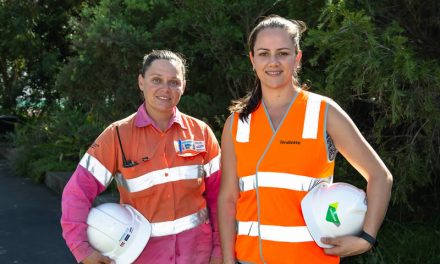Timber industry and government bodies are leading the way.
The industry response to this summer’s unprecedented fire season is ongoing and inspiring. We know that the whole process of recovery is going to take time and involve a great deal of expertise, but there are industry and government initiatives underway that will help people to both recover now and plan better for the future.
Forest and Wood Products Australia (FWPA) is running a series of community workshops that will include local councils and building design professionals. The workshops are part information session, part support meeting and part collecting information from the current fires to help support future timber usage if there are any proposals to change the current standard.
The first three are scheduled for this month:
- BAIRNSDALE, VIC: Tuesday 10 March, 9.30am–12.30pm (Bairnsdale RSL, The Lakes Room, 2 Forge Creek Rd, Bairnsdale Vic 3875)
- TUMBARUMBA, NSW: Wednesday 11 March, 9.30am–12.30pm (Tumbarumba RSL Hall, Winton Street, Tumbarumba NSW 2653)
- BEGA, NSW: Thursday 12 March, 9.30am–12.30pm (Bega Valley Civic Centre, Zingel Place, Bega NSW 2550)
Topics include helping pets through fires and heatwaves and preparing your property (both run by the RFS or CFA), recovery and rebuilding (Nigel Bell from EcoDesign), managing your mental health during and after fires (local mental health professionals) and designs for rebuilding that are safe and liveable (David Rowlinson, Make It Wood, Planet Ark). Tonia Todman will be hosting the workshops. To book, visit www.fwpa.com.au
Learning from the fires
The information-gathering component is essential, as there is already discussion about changes to BAL ratings and a risk any changes could be made on political or emotional rather than evidence-based arguments.
“FWPA is an evidence-based organisation but there are some groups who seek to remove timber from building construction in bushfire-prone areas without regard to evidence or an assessment of the costs and benefits,” says Ric Sinclair, managing director, FWPA. “As an industry, we need to remain vigilant to ensure that the right information is readily available to support and maintain important markets such as landscape timbers, framing and decking.”
The most recent edition of the FWPA podcast, WoodChat, also focuses on best-practice methods of building with wood in bushfire-prone areas, with Boris Iskra, FWPA’s National Codes and Standards Manager providing expert advice. You can listen to WoodChat on SoundCloud and iTunes.
FWPA has also updated its free resources to help re-build resilient homes in bushfire-prone areas. A program of workshops and further informational resources will also be rolled out over the coming months in fire-affected communities.
These resources include Building with Timber in Bushfire-prone Areas Guide 4 and an updated online BAL calculator.
Additionally, FWPA is developing a best-practice guide for log storage and salvage following a bushfire event. This will include in-mill trials on recovery rates for wood exposed to the fires.
Government initiatives
The Federal Government has delivered a mixed response so far. On the one hand, it has tasked CSIRO with delivering practical resilience measures in relation to bushfires and climate change.
Dr Larry Marshall, Chief Executive of the CSIRO says, “CSIRO will provide recommendations on how we can better prepare for and manage bushfires when they occur, including new tools driven by science and technology.”
If given free rein, the results will be very valuable. CSIRO draws on a range of science disciplines across the organisation for bushfire research including: fire prediction, fire behaviour, fire monitoring, fire suppression, fire testing, bushfire modelling tools, understanding the link between bushfires and greenhouse gas emissions, air quality, fire impacts and recovery planning, post fire-season review and field work that informs building codes, disaster management, Indigenous fire knowledge, community resilience, environmental rehabilitation and climate research.
On the other hand, funding for the Bushfire and Natural Hazards CRC has not had its funding renewed and the CRC is currently slated to wind up on 30 June 2021 if alternative funding sources do not become available. Since its launch in 2013, the CRC has been a valuable tool to help a range of emergency services, land management agencies, academics and other experts share information and knowledge and collaborate on projects ranging from disaster response to lowering risk and building better disaster resilience into infrastructure.
Frustratingly, at the end of February, the touted $2 billion in emergency grants and low-interest loans to small business owners had paid out only $2.9 million in grants and $400,000 in concessional loans, with roadblocks ranging from slow assessments to difficult grant processes being blamed. The Prime Minister has announced that a “repackaging” is in progress, but at the time of writing had supplied no details as to how that might be done.
For more. visit www.fwpa.com.au, www.bnhcrc.com.au and www.csiro.au/en/Research/Environment/Extreme-Events/Bushfire
Image credit: Daria Ni/shutterstock.com












